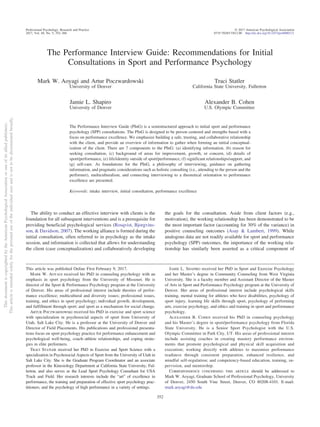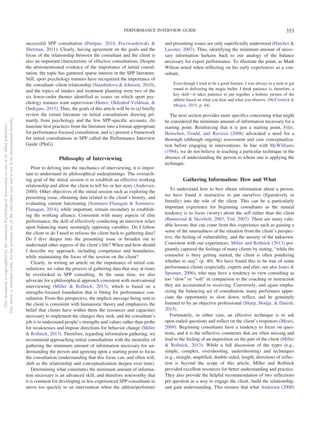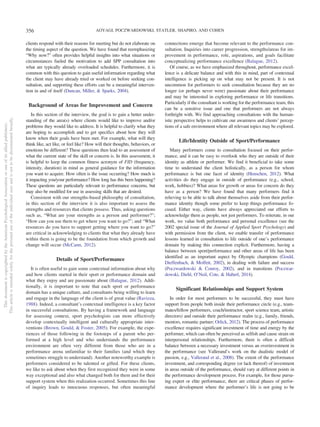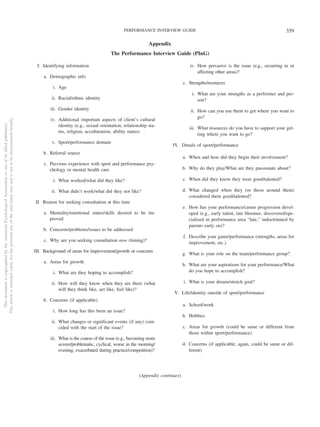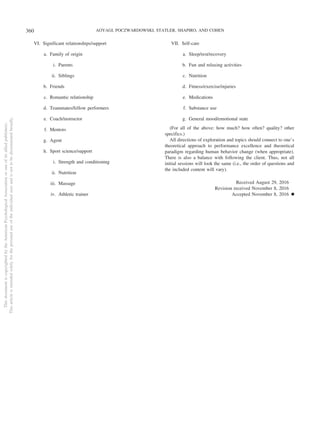The document presents the Performance Interview Guide (PInG), a semistructured approach for initial consultations in sport and performance psychology. The PInG is designed to establish a trusting relationship and gather necessary information to understand the client and their goals, while focusing on strengths and performance excellence. It consists of 7 components to gather background information, details of sport/performance, life outside of sport, relationships, and self-care. The approach emphasizes building rapport, a minimum of necessary information gathering, and connecting information to theories of performance excellence.
